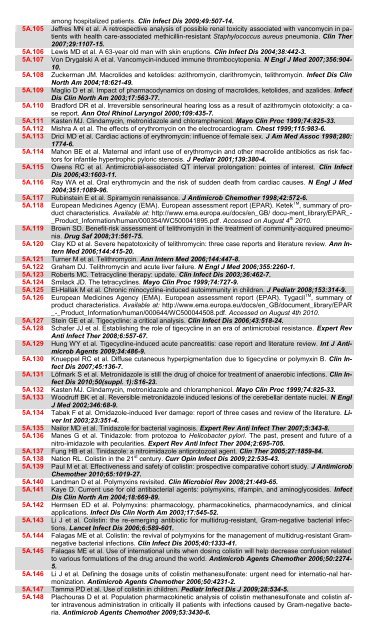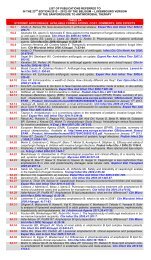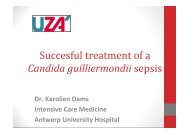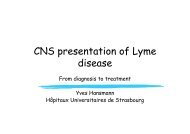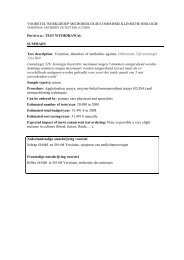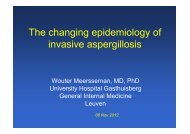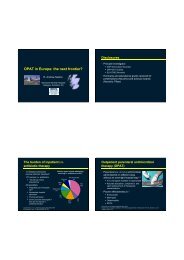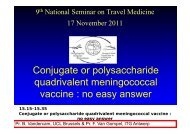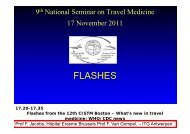TABLE 39A LIST OF PUBLICATIONS REFERRED TO IN THE ...
TABLE 39A LIST OF PUBLICATIONS REFERRED TO IN THE ...
TABLE 39A LIST OF PUBLICATIONS REFERRED TO IN THE ...
You also want an ePaper? Increase the reach of your titles
YUMPU automatically turns print PDFs into web optimized ePapers that Google loves.
among hospitalized patients. Clin Infect Dis 2009;49:507-14.<br />
5A.105 Jeffres MN et al. A retrospective analysis of possible renal toxicity associated with vancomycin in patients<br />
with health care-associated methicillin-resistant Staphylococcus aureus pneumonia. Clin Ther<br />
2007;29:1107-15.<br />
5A.106 Lewis MD et al. A 63-year old man with skin eruptions. Clin Infect Dis 2004;38:442-3.<br />
5A.107 Von Drygalski A et al. Vancomycin-induced immune thrombocytopenia. N Engl J Med 2007;356:904-<br />
10.<br />
5A.108 Zuckerman JM. Macrolides and ketolides: azithromycin, clarithromycin, telithromycin. Infect Dis Clin<br />
North Am 2004;18:621-49.<br />
5A.109 Maglio D et al. Impact of pharmacodynamics on dosing of macrolides, ketolides, and azalides. Infect<br />
Dis Clin North Am 2003;17:563-77.<br />
5A.110 Bradford DR et al. Irreversible sensorineural hearing loss as a result of azithromycin ototoxicity: a case<br />
report. Ann Otol Rhinol Laryngol 2000;109:435-7.<br />
5A.111 Kasten MJ. Clindamycin, metronidazole and chloramphenicol. Mayo Clin Proc 1999;74:825-33.<br />
5A.112 Mishra A et al. The effects of erythromycin on the electrocardiogram. Chest 1999;115:983-6.<br />
5A.113 Drici MD et al. Cardiac actions of erythromycin: influence of female sex. J Am Med Assoc 1998;280:<br />
1774-6.<br />
5A.114 Mahon BE et al. Maternal and infant use of erythromycin and other macrolide antibiotics as risk factors<br />
for infantile hypertrophic pyloric stenosis. J Pediatr 2001;139:380-4.<br />
5A.115 Owens RC et al. Antimicrobial-associated QT interval prolongation: pointes of interest. Clin Infect<br />
Dis 2006;43:1603-11.<br />
5A.116 Ray WA et al. Oral erythromycin and the risk of sudden death from cardiac causes. N Engl J Med<br />
2004;351:1089-96.<br />
5A.117 Rubinstein E et al. Spiramycin renaissance. J Antimicrob Chemother 1998;42:572-6.<br />
5A.118 European Medicines Agency (EMA). European assessment report (EPAR). Ketek TM , summary of product<br />
characteristics. Available at: http://www.ema.europa.eu/docs/en_GB/ docu-ment_library/EPAR_-<br />
_Product_Information/human/000354/WC500041895.pdf. Accessed on August 4 th 2010.<br />
5A.119 Brown SD. Benefit-risk assessment of telithromycin in the treatment of community-acquired pneumonia.<br />
Drug Saf 2008;31:561-75.<br />
5A.120 Clay KD et al. Severe hepatotoxicity of telithromycin: three case reports and literature review. Ann Intern<br />
Med 2006;144:415-20.<br />
5A.121 Turner M et al. Telithromycin. Ann Intern Med 2006;144:447-8.<br />
5A.122 Graham DJ. Telithromycin and acute liver failure. N Engl J Med 2006;355:2260-1.<br />
5A.123 Roberts MC. Tetracycline therapy: update. Clin Infect Dis 2003;36:462-7.<br />
5A.124 Smilack JD. The tetracyclines. Mayo Clin Proc 1999;74:727-9.<br />
5A.125 El-Hallak M et al. Chronic minocycline-induced autoimmunity in children. J Pediatr 2008;153:314-9.<br />
5A.126 European Medicines Agency (EMA). European assessment report (EPAR). Tygacil TM , summary of<br />
product characteristics. Available at: http://www.ema.europa.eu/docs/en_GB/document_library/EPAR<br />
_-_Product_Information/human/000644/WC500044508.pdf. Accessed on August 4th 2010.<br />
5A.127 Stein GE et al. Tigecycline: a critical analysis. Clin Infect Dis 2006;43:518-24.<br />
5A.128 Schafer JJ et al. Establishing the role of tigecycline in an era of antimicrobial resistance. Expert Rev<br />
Anti Infect Ther 2008;6:557-67.<br />
5A.129 Hung WY et al. Tigecycline-induced acute pancreatitis: case report and literature review. Int J Antimicrob<br />
Agents 2009;34:486-9.<br />
5A.130 Knueppel RC et al. Diffuse cutaneous hyperpigmentation due to tigecycline or polymyxin B. Clin Infect<br />
Dis 2007;45:136-7.<br />
5A.131 Löfmark S et al. Metronidazole is still the drug of choice for treatment of anaerobic infections. Clin Infect<br />
Dis 2010;50(suppl. 1):S16-23.<br />
5A.132 Kasten MJ. Clindamycin, metronidazole and chloramphenicol. Mayo Clin Proc 1999;74:825-33.<br />
5A.133 Woodruff BK et al. Reversible metronidazole induced lesions of the cerebellar dentate nuclei. N Engl<br />
J Med 2002;346:68-9.<br />
5A.134 Tabak F et al. Ornidazole-induced liver damage: report of three cases and review of the literature. Liver<br />
Int 2003;23:351-4.<br />
5A.135 Nailor MD et al. Tinidazole for bacterial vaginosis. Expert Rev Anti Infect Ther 2007;5:343-8.<br />
5A.136 Manes G et al. Tinidazole: from protozoa to Helicobacter pylori. The past, present and future of a<br />
nitro-imidazole with pecularities. Expert Rev Anti Infect Ther 2004;2:695-705.<br />
5A.137 Fung HB et al. Tinidazole: a nitroimidazole antiprotozoal agent. Clin Ther 2005;27:1859-84.<br />
5A.138 Nation RL. Colistin in the 21 st century. Curr Opin Infect Dis 2009;22:535-43.<br />
5A.139 Paul M et al. Effectiveness and safety of colistin: prospective comparative cohort study. J Antimicrob<br />
Chemother 2010;65:1019-27.<br />
5A.140 Landman D et al. Polymyxins revisited. Clin Microbiol Rev 2008;21:449-65.<br />
5A.141 Kaye D. Current use for old antibacterial agents: polymyxins, rifampin, and aminoglycosides. Infect<br />
Dis Clin North Am 2004;18:669-89.<br />
5A.142 Hermsen ED et al. Polymyxins: pharmacology, pharmacokinetics, pharmacodynamics, and clinical<br />
applications. Infect Dis Clin North Am 2003;17:545-52.<br />
5A.143 Li J et al. Colistin: the re-emerging antibiotic for multidrug-resistant, Gram-negative bacterial infections.<br />
Lancet Infect Dis 2006;6:589-601.<br />
5A.144 Falagas ME et al. Colistin: the revival of polymyxins for the management of multidrug-resistant Gramnegative<br />
bacterial infections. Clin Infect Dis 2005;40:1333-41.<br />
5A.145 Falagas ME et al. Use of international units when dosing colistin will help decrease confusion related<br />
to various formulations of the drug around the world. Antimicrob Agents Chemother 2006;50:2274-<br />
5.<br />
5A.146 Li J et al. Defining the dosage units of colistin methanesulfonate: urgent need for internatio-nal harmonization.<br />
Antimicrob Agents Chemother 2006;50:4231-2.<br />
5A.147 Tamma PD et al. Use of colistin in children. Pediatr Infect Dis J 2009;28:534-5.<br />
5A.148 Plachouras D et al. Population pharmacokinetic analysis of colistin methanesulfonate and colistin after<br />
intravenous administration in critically ill patients with infections caused by Gram-negative bacteria.<br />
Antimicrob Agents Chemother 2009;53:3430-6.


